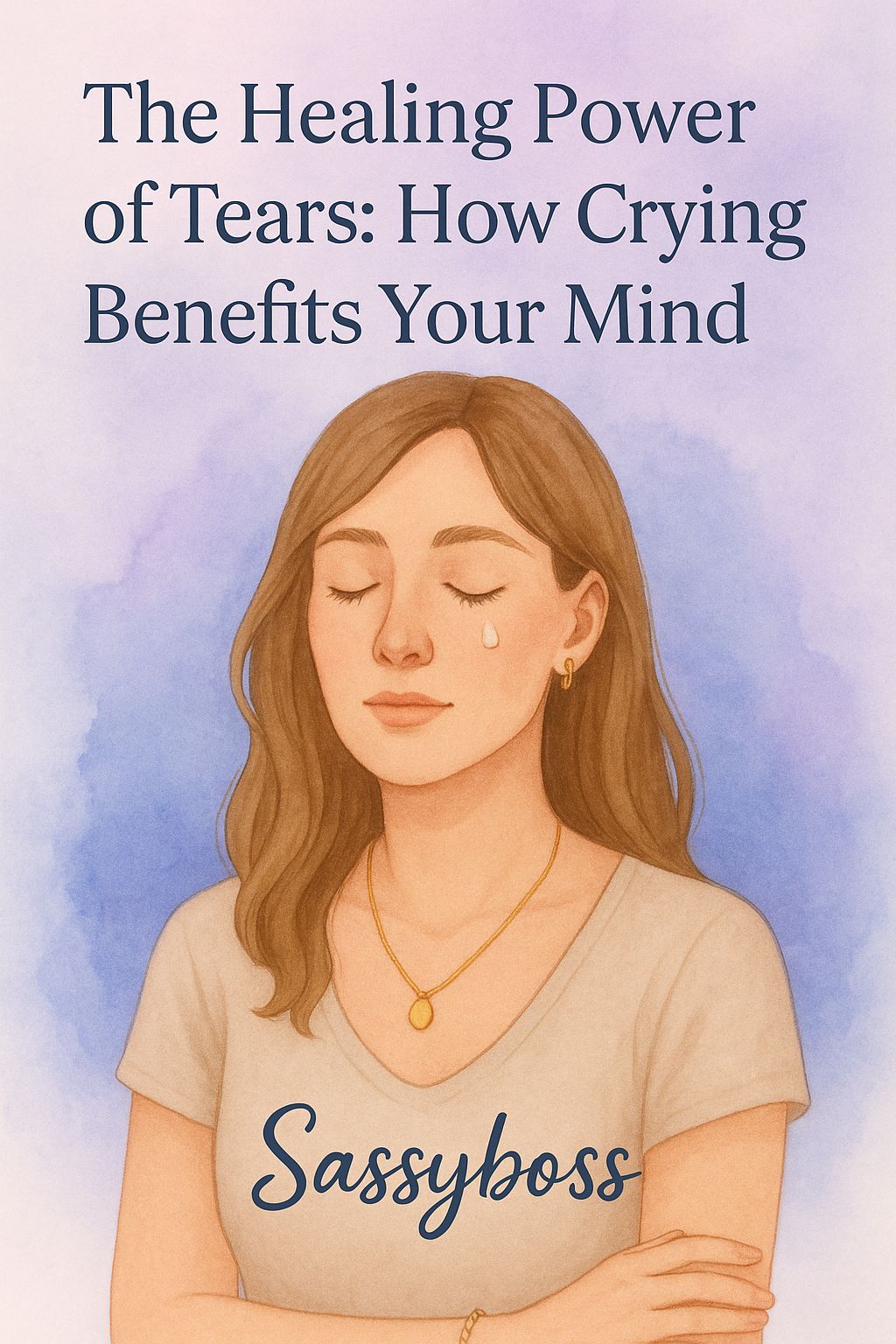The Healing Power of Tears: How Crying Benefits Your Mind
Crying is a deeply human experience. Whether triggered by heartbreak, grief, joy, or sheer overwhelm, tears are a natural response to a wide range of emotions. While many of us may instinctively suppress our tears—thinking them to be a sign of weakness or vulnerability—the truth is that crying serves an essential purpose in our emotional and mental well-being. In fact, science and psychology increasingly support the idea that tears are not only therapeutic but also necessary for maintaining a healthy mind.
In this blog post, we’ll explore the healing power of tears, shedding light on how crying benefits your mental and emotional health.
1. Crying as an Emotional Release
One of the most immediate benefits of crying is emotional catharsis. When we cry, especially during times of emotional distress, we are releasing built-up tension, sadness, frustration, or anxiety. This release can be profoundly healing.
Much like steam escaping from a pressure cooker, tears allow us to “let out” emotions that, if bottled up, could manifest as stress, anger, or even physical symptoms such as headaches or fatigue. By crying, we give ourselves permission to feel and process our emotions instead of denying or suppressing them.
2. Tears and Stress Reduction

Scientific studies have shown that emotional crying is linked to the reduction of stress hormones such as cortisol. When we cry, especially in response to intense feelings, our body may be trying to restore its equilibrium.
Crying activates the parasympathetic nervous system, which helps the body rest and digest after stress. This is why many people report feeling calmer and even physically lighter after a good cry. It’s not just an emotional shift—there’s a real, biological change happening inside the body that promotes relaxation.
3. Tears Help You Process Grief and Trauma
Grieving a loss—whether of a loved one, a relationship, or a life opportunity—can be an overwhelming experience. Tears are a natural part of mourning and are often the body’s way of expressing pain that words cannot describe.
Crying during grief allows you to confront and process your emotions, rather than suppress them. Many therapists encourage clients to allow themselves to cry freely during counseling sessions, as it facilitates emotional healing and the journey toward acceptance.
4. Crying Promotes Emotional Connection

Interestingly, crying is also a social signal. When we cry in front of others, we communicate vulnerability and need, which can strengthen social bonds. People are often moved to offer comfort and support when they see someone crying, leading to deeper emotional connections.
This shared vulnerability fosters empathy and emotional intimacy in relationships. Rather than isolating us, tears can actually bring people closer, helping us feel seen, heard, and supported.
5. Improved Mood Through Endorphin Release
Crying, particularly emotional crying, can trigger the release of endorphins—your body’s natural “feel-good” chemicals. These neurotransmitters can help relieve both emotional and physical pain and improve your mood after a crying episode.
This is why many people describe feeling “cleansed” or “lighter” after crying. It’s not just in your head—your brain is actively helping you recover from distress.
6. Crying Can Help Clarify Your Emotions

Sometimes we don’t even realize how deeply we feel something until we start to cry. Tears can serve as a signal from your subconscious, pointing to unresolved feelings or stress you didn’t know you were carrying.
By tuning in to these moments, crying can lead to increased self-awareness and emotional clarity. You may come away with a better understanding of what’s truly bothering you or what needs to change in your life.
7. It’s Okay to Cry—and It’s Healthy Too
Despite the many benefits of crying, many people still feel ashamed or embarrassed by their tears. Cultural norms, gender expectations, and childhood experiences may all contribute to the belief that “strong people don’t cry.”
But strength isn’t the absence of emotion—it’s the courage to face your feelings head-on. Crying is not a weakness. It is a form of resilience. It means you are engaging with your emotions instead of hiding from them.
Tips for Embracing the Healing Power of Tears:

• Give yourself permission to cry: Don’t fight the tears when they come. Find a safe space to let them flow.
• Journal afterward: Writing about what triggered your tears can help deepen your emotional insight.
• Talk to someone: Sharing your feelings with a trusted friend, therapist, or family member can enhance the healing process.
• Practice self-care: After crying, treat yourself gently. Drink water, take a walk, or rest.
Final Thoughts
Crying is more than just an emotional reaction—it’s a healing mechanism built into our biology. Whether you cry alone in your room, in therapy, or in the arms of a loved one, know that each tear carries the potential for renewal and healing.
So the next time you feel the tears welling up, let them fall. Your mind—and your heart—may thank you for it.
